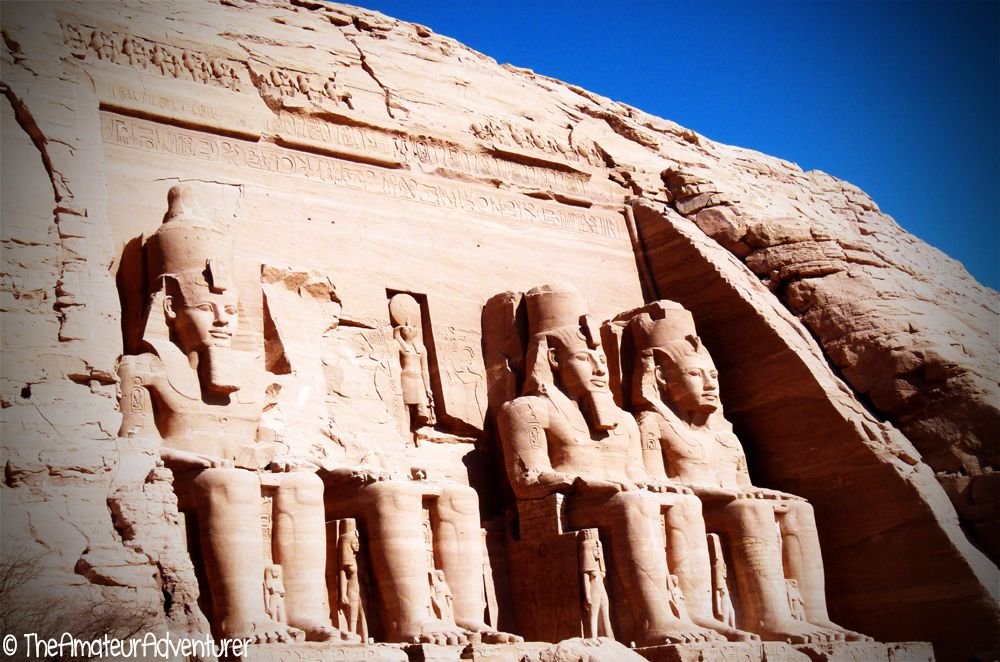
Hello my lovely Steemian friends,
Yesterday saw us travelling south from Cairo to Luxor and Aswan, visiting a Nubian village along the way. But the adventure I want to share today is a bucket list moment.
Ever since I was a child at school I'd been in love with Egyptian myths and history and along with the Great Pyramids and the Sphinx, Ramesses temple at Abu Simbel was high on my list of places in the world I wanted to visit...
I hope you enjoy the trip!

"IN Egypt's sandy silence, all alone, Stands a gigantic Leg, which far off throws The only shadow that the Desert knows:— "I am great OZYMANDIAS," saith the stone, "The King of Kings; this mighty City shows "The wonders of my hand."— The City's gone,— Nought but the Leg remaining to disclose The site of this forgotten Babylon" - Horace Smith 1818 (Inspired by the Statue of Ramesses II)
3.30am wake up call...what the? I thought we were on holidays? Apparently that was also the later wake up call, a favour from our local guide, Ahmed because we'd been good "habibis".
This Abu Simbel gig had better be all I was hoping it would be!
There is in fact a very good reason for the early morning start. Two convoys leave Aswan each day to take tourists to Abu Simbel, one at 4 am and one at 4.30 am. The reason? 40 plus degree heat, even at 7.30 in the morning. In the peak of summer it reaches over 50. Sight seeing is all done by 10.30am when the heat is unbearable for both tourists and the police escort which takes the convoys out.
Early morning bus convoy
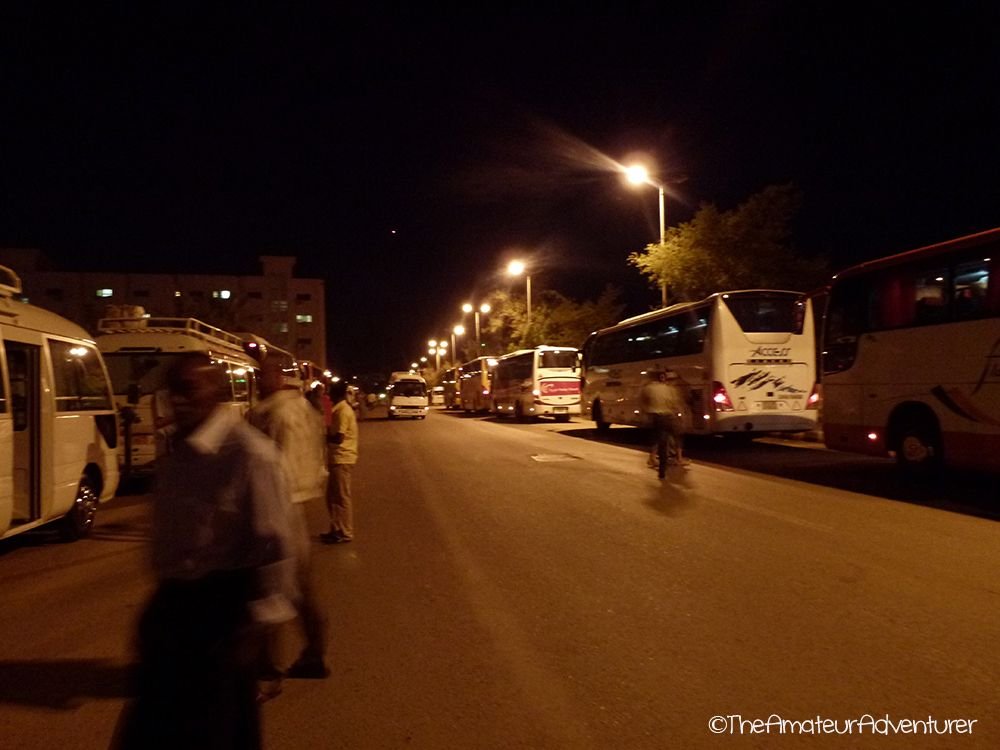
A hundred buses make their way in each convoy. There used to be three groups, but tourism in Egypt has dropped off since the revolution.
It's a three hour trip and everyone sleeps...
Lake Nasser
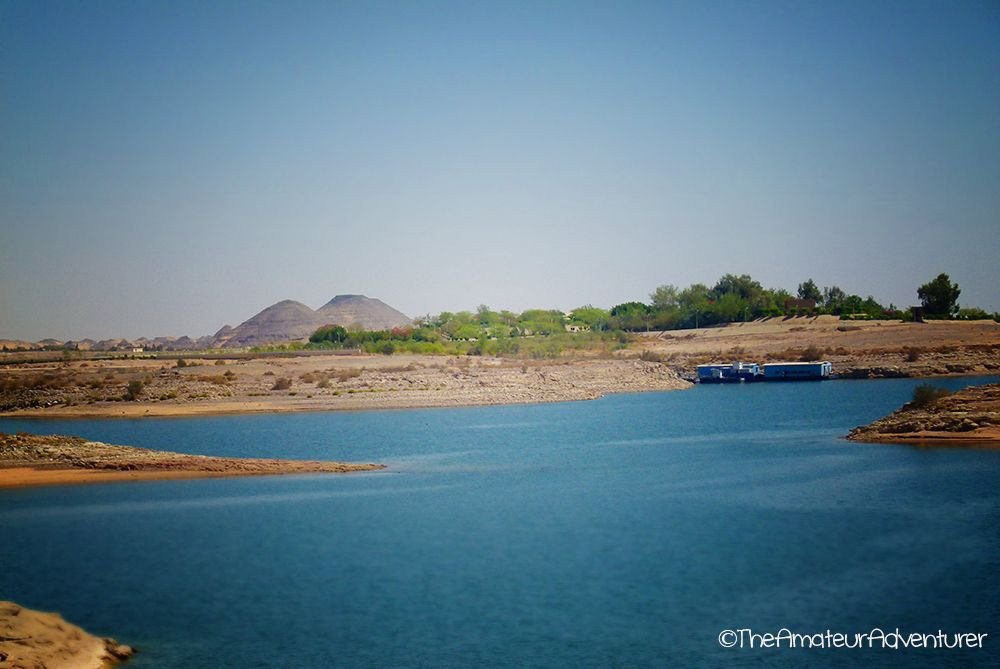
Abu Simbel is a tribute to the male ego, or at least that of Ramesses II. And it's an impressive tribute, sitting on the shores of Lake Nasser. It almost ceased to exist, or at least become a dive site!
Originally built between 1244 BC and 1224 BC, the temple was a monument to the greatness of Ramesses II. It consists of two temples, The Temple of Ramesses and the Temple of Nefertari (who was his favorite wife). Carved out of the cliff side the temples make any visitor feel insignificant in comparison. The great temple (Ramesses) stands 100 feet tall by 119 feet wide with 75 foot statues and the smaller temple (Nefertari) is 80 feet wide. Abu Simbel is unique not only in its size and popularity but in the fact that it is the only temple in Egypt dedicated to a queen.
The temples were once lost to the desert sands and rediscovered in 1813 by J.L. Burckhardt who passed on his discovery to explorer Giovanni Belzoni. Four years later Belzoni finally cleared the enterance to the temple and took everything he could carry. The name of the site, according to legend, was the name of a young boy who first led Burckhardt to the temple.
The Temple of Ramesses II
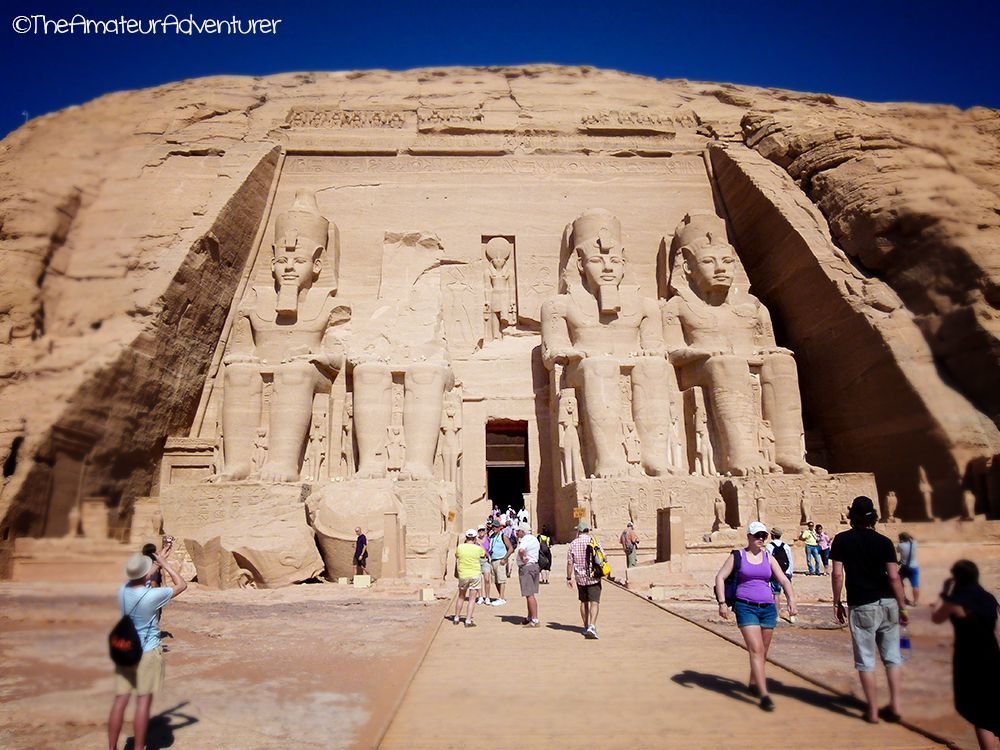
The temples were almost lost a second time when the construction of the Aswan High Dam threatened to submerge the site under the waters of Lake Nasser. The Egyptian government along with UNESCO and a team of engineers, scientists and archaeologists worked for four years to relocate the monument 200 feet from the original site.
The first Aswan dam (the Low Dam) was built by the British in 1898 in an attempt to increase cotton production in Egypt. It was later added to in 1907 and again in 1929. When it almost flooded in 1946 it was proposed that a new dam be built four miles upriver. After the Egyptian Revolution by the Free Officers in 1952, Gamal Nasser became the nation's leader and official plans were drawn up. The dam was to be constructed with funding by the USA, Britain and the Wolrd Bank. However, due to Egypt's alliance with the Soviet Union in the midst of the Cold War, the Americans backed out, stating that Egypt hadn't got the water rights that were crucial to the building of the dam (which was part of the original deal). In an attempt to gain funding for the project, Nasser nationalised the Suez Canal which sparked the Suez War as the UK, France and Israel invaded Egypt. The Soviets stepped up to fund the Aswan project in 1958 and provided technicians and heavy equipment. The High Dam's Construction began in 1960 and by 1964 the resevoir of Lake Nasser had already began to rise.
Temple of Nefertiti
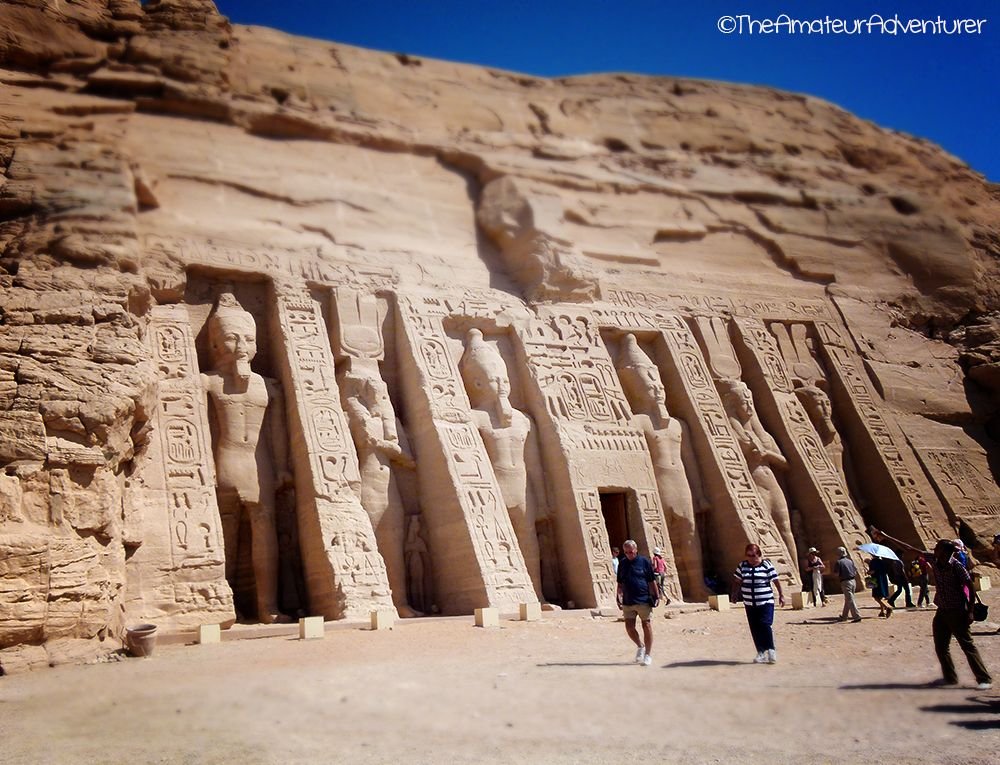
By 1956 it became apparent that the rising waters of Lake Nasser would destroy a large part of Egypt's glorious past and by 1960 there were plans in place to move 24 major monuments along the shores of the Nile. The relocation was co-funded by the Egyptian government and UNESCO, who raised funds from donors all around the world. The $40 million project began in 1964 and has been considered by many as the greatest feat of archaeological engineering ever. Each temple was cut into large blocks, moved 65 meters higher and 200 meters back and then reassembled and fixed together with concrete. Careful consideration was given to the positions of the temples both in relation to each other and to the sun. When the relocation was complete, construction crews built large concrete domes that could support the 10,000 tonnes of rock of the hills that were built around the temples to keep the original look of being carved into the cliffs. The relocation gained a lot of media attention which made Abu Simbel one of the most visited sites in Egypt.
The original temple, in the days of Ramesses was perfectly aligned to briefly allow the rays of the equinox sun to strike certain statues deep within the interior of the main structure - twice a year. This coincided with his birth date and coronation. During the reconstruction the alignment became a day out.
Large statues carved into the walls of the temple
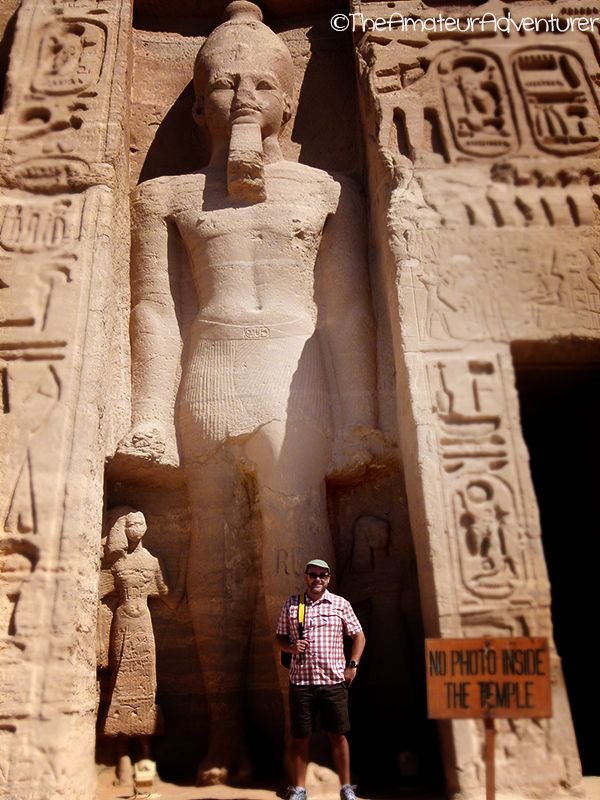
Unfortunately photography is no longer permitted inside the temples, due to the difficulty of preventing people using their flashes, but this has resulted in the preservation of stunning reliefs and statues.
Stunningly preserved reliefs and statues inside the temple
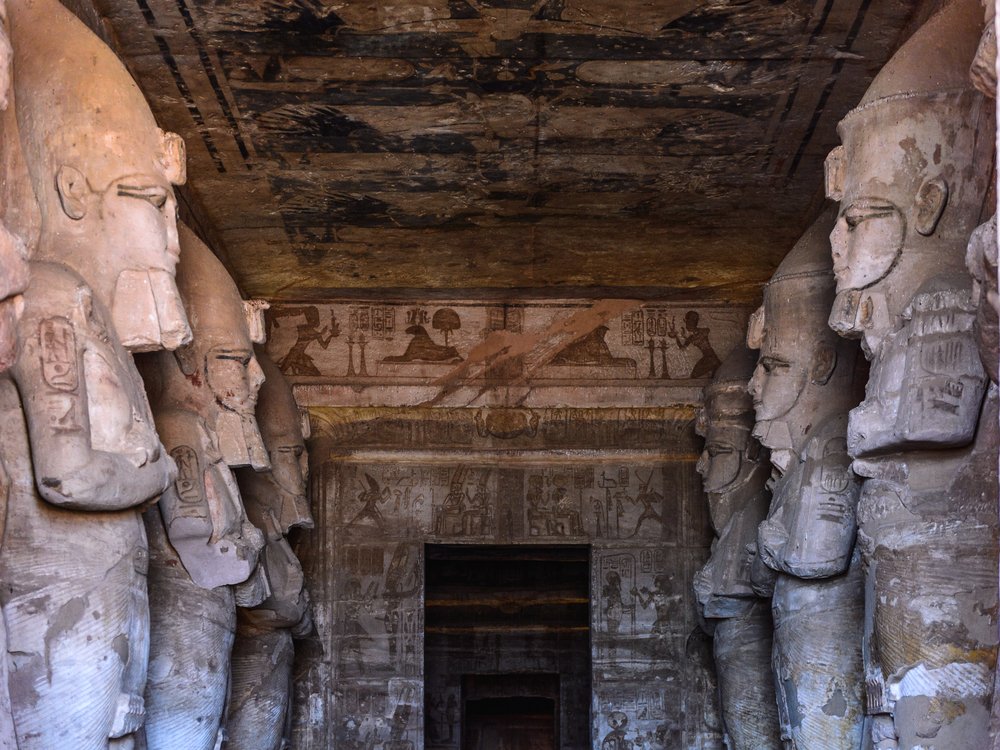
This photo was sourced from DepositPhotos as photography inside is no longer permitted
A visit to the temples is well worth the three hours of heat. Ahmed was forgiven for the early start!
Ticking off the bucket-list!
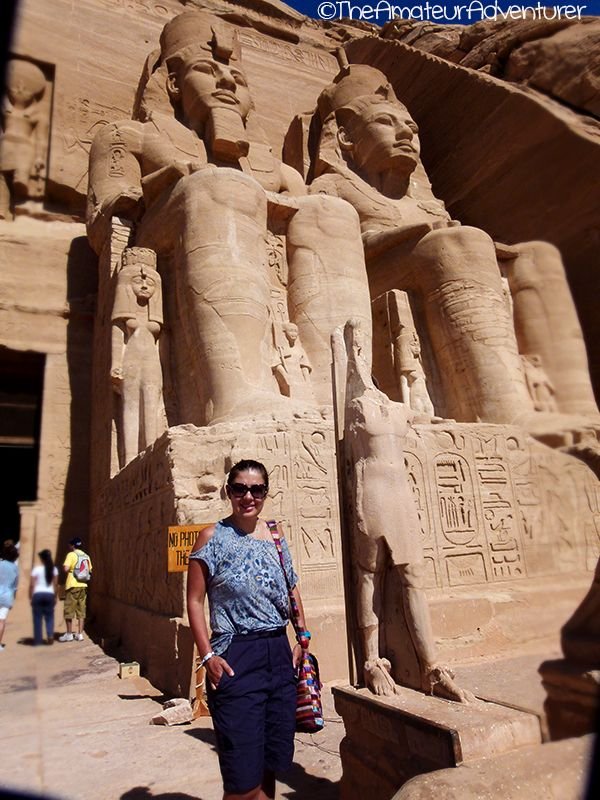
Hope you loved this glimpse of Egypt's history. Stay tuned for more adventures in the stunning country
Til then,
Steem on with Love and Light

If you enjoyed this post don't forget to UPVOTE and Hit that FOLLOW Button!
Let's All Share the Steemit Love!

Don't forget to come check out the teamaustralia tag and see what exciting things we are all up to in the land of Oz! It's full of Aussies and Aussie-lovers with great stories from when we are at home or loose in the world!
Thanks to @bearone for creating my beautiful teamaustralia banner which I love sooooo much! Don't forget to check out her posts and show her some love as well.
If you are a newbie and looking for help - or you just want to help support the minnows and grow this wonderful platform of ours - please consider checking out minnowsupportproject. This is a fantastic initiative to help everyone grow together and is full of fantastic advice for anyone starting out. You can find out more about it here.

(Logo and Banner Created By @justcallmemyth - another great Steemian you should check out and support)
Source:
- All Photos have been taken by the Author apart from the photo inside the temple as photography is no longer permitted in the temple.
- This post is an edited version of an original post on my Travel Blog http://theamateuradventurer.com/sometimes-size-does-matter/
- Content is original!
- You can check out other Egyptian adventures here: Amateur Adventures #23: Far from the "Maddening" Crowd - Following the Nile
